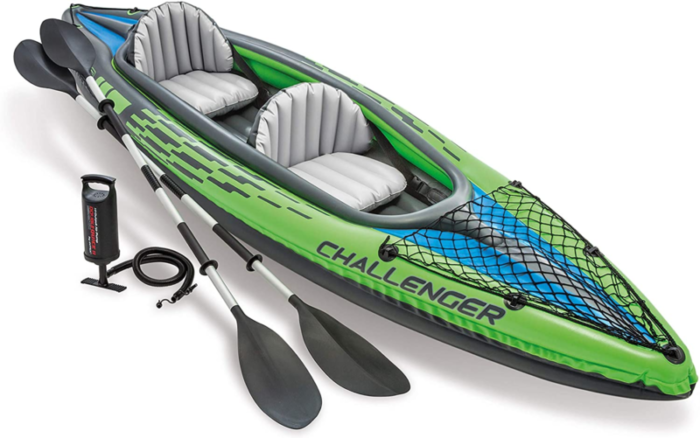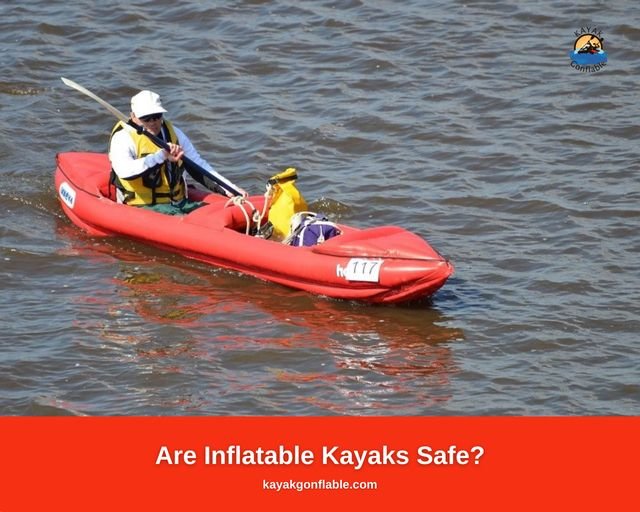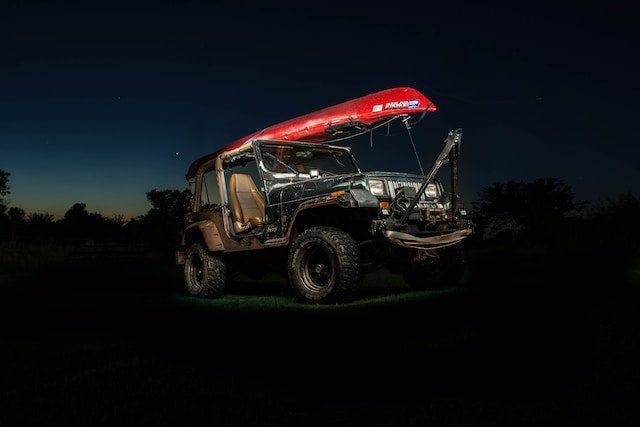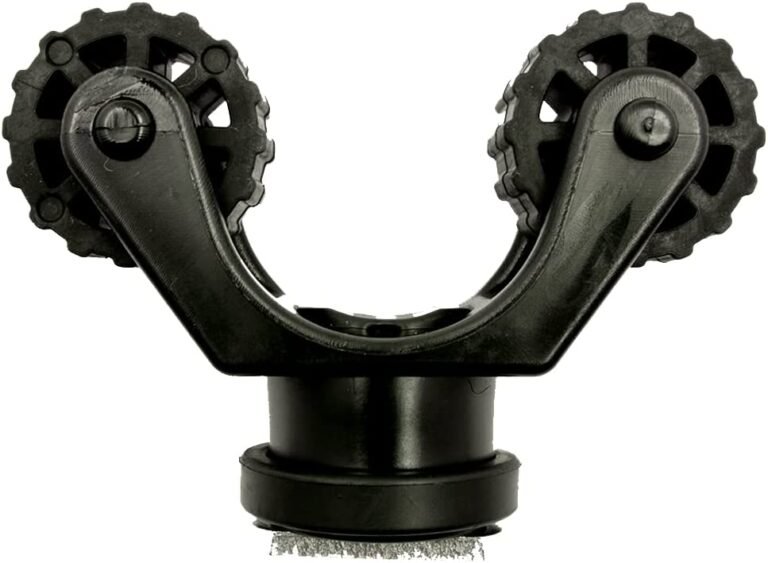What to Wear for a Kayaking Date
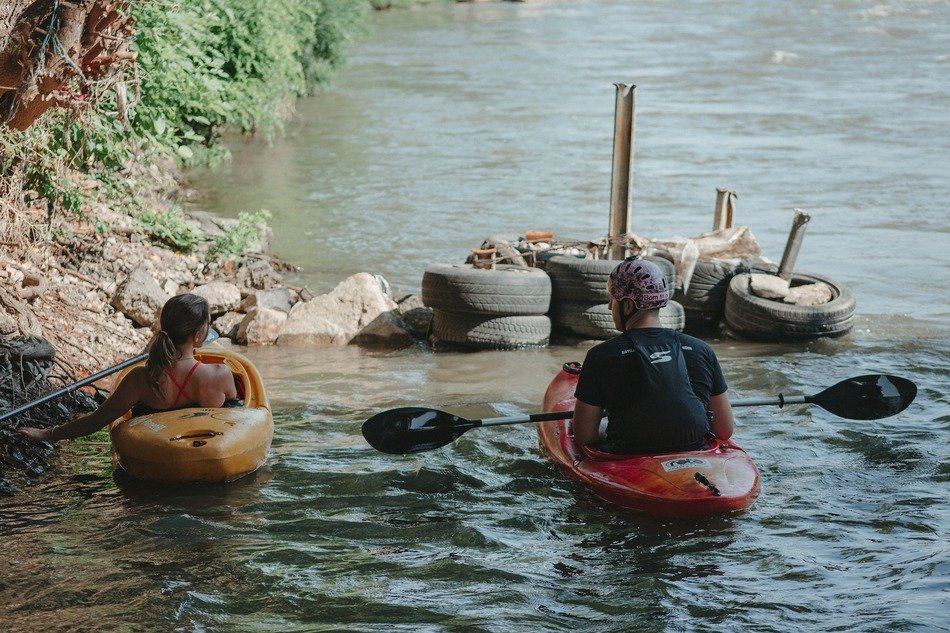
Picture this: the sun gently kissing the tranquil waters, a gentle breeze ruffling your hair, and the rhythmic sound of paddles slicing through the water.
There’s something undeniably alluring about a kayaking date, isn’t there? It’s a perfect blend of adventure, intimacy, and nature’s serenity, making it an increasingly popular choice for couples seeking a unique and memorable date.
While the prospect of a kayaking date might be exciting, it is essential to remember that kayaking isn’t all about attractive moments. It can be physically demanding, and the wrong choice of attire can quickly turn your dreamy date into a soggy disaster.
So, what you wear matters – not just for style but also for comfort, safety, and practicality. In this article, we will delve into how to look good for a kayaking date while ensuring your safety and comfort.
When planning your kayaking attire bear in mind that you should always dress for the water temperature, not the air temperature.
Understanding the Kayaking Environment
Before we dive into the intricacies of what to wear for your kayaking date, let’s first understand the diverse kayaking environments you might encounter.
1. Lake Kayaking
Lakes offer calm and scenic landscapes, making them ideal for a leisure kayaking date. Expect tranquil waters and beautiful surroundings.
2. River Kayaking
If you’re seeking a bit more excitement, river kayaking might be your choice. Rivers can vary from gentle flows to challenging rapids, so be prepared for some action.
3. Ocean Kayaking
Ocean kayaking provides a unique opportunity to explore coastal beauty. However, it often involves dealing with tides, currents, and potentially larger waves.
Weather Considerations
In warm weather, lightweight, breathable clothing is your best friend. Quick-drying materials will help keep you comfortable. As temperatures drop, layering becomes essential.
Always check the weather forecast before embarking on your kayaking date. Sudden storms can turn a calm outing into a challenging and potentially dangerous one.
Water Conditions
If you’re on a lake or a peaceful river, you can opt for more relaxed attire. Focus on comfort and sun protection. In rougher conditions, like ocean kayaking or turbulent rivers, prioritize safety with appropriate gear such as wetsuits, drysuits, and secure life jackets.
Duration of the Kayaking Date
For brief kayaking excursions, lightweight clothing, sunscreen, and a good hat should suffice. If your date would extend for several hours or is a day trip, bring extra layers, snacks, and plenty of hydration. Irrespective of the length of your kayaking adventure, it is important to always wear a floatation device.
Essential Gear for Kayaking Safety
Ensuring your safety during a kayaking date is of paramount importance. To enjoy your adventure to the fullest, you’ll need the right gear. Let’s explore the essentials

Types of Life Jackets
- Type I (Offshore Life Jacket): Suitable for open waters and long kayaking trips where rescue might be delayed. Provides the highest level of buoyancy. They are bulky and are guaranteed to turn MOST unconscious wearers face-up.
- Type II (Nearshore Buoyant Vest): Ideal for kayaking in calmer waters, such as lakes or slow-moving rivers. Offers good buoyancy but may require more effort to stay afloat. Suitable when immediate rescue is guaranteed. .
- Type III (Flotation Aid): Popular among kayakers for its comfort and mobility. Suitable for recreational kayaking and canoeing. Is less bulky than type Ⅱ but performs poorly in rough waters. Due to its comfort and improved range of mobility for the wearer, it can be worn for extended periods but is not suitable for extended rescue. Suitable for use when the chances of immediate rescue are high.
- Type IV (Throwable PFDs): They are not to be worn but serve as backup floatation devices. They are thrown to victims overboard to supplement their buoyancy while waiting for help. Examples are life rings, buoyant cushions, and horseshoe buoys.
- Type V (Special Use Device): Includes specialized vests like whitewater PFDs and are designed for specific water activities. They should be worn at all times and used for the activity it was designed for to comply with the US Coastal Guard regulation.
Regardless of the type of life jacket you opt for, ensure it fits snugly and allows for freedom of movement. Follow the manufacturer’s sizing guidelines to get the right fit for you. Wearing a life jacket is non-negotiable. It can save lives in emergencies, keeping you afloat and reducing fatigue.
Adding reflective tape to your life jacket enhances visibility, especially in low-light conditions. It’s crucial for safety during dusk or dawn paddling.
Adding reflective tape to your life jacket enhances visibility, especially in low-light conditions. It’s crucial for safety during dusk or dawn paddling.
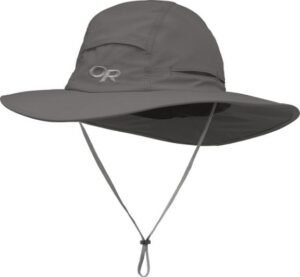
Headwear
A wide-brimmed sun hat shields your face and neck from the sun, enhancing your comfort during sunny kayaking trips. If you prefer a cap, ensure it has a retainer to prevent it from blowing away in the wind.
If you’re tackling challenging river rapids, wear a kayak-specific helmet to protect your head from potential impacts on rocks and obstacles.
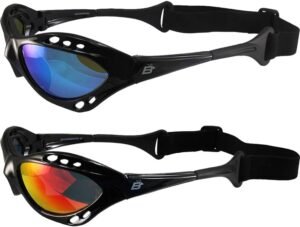
Sunglasses with UV Protection and Retainers
Choose sunglasses with UV protection to safeguard your eyes from harmful UV rays, glare, and reflections off the water. Attach retainers to your sunglasses to prevent them from falling into the water during unexpected maneuvers.

Footwear
Water Shoes
Water shoes offer a good balance between protection and comfort. Hence, are suitable for most kayaking conditions. They provide grip and protection for your feet.
Sandals
In waters that are calm and warm, sandals are an excellent choice for breathability. Make sure they have a good grip and dry quickly.
Neoprene Booties
If you’re kayaking in colder conditions, neoprene booties provide insulation and protect your feet from cold water.
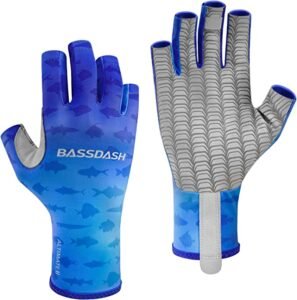
Gloves for Hand Protection (Optional)
Gloves can provide extra grip on your paddle and protect your hands from blisters, especially during longer kayaking trips.
Water-Resistant Communication Devices
Invest in a waterproof pouch or bag to protect your phone, ensuring you have a means of communication in case of emergencies. Carry a whistle as a basic signaling device. It’s compact and effective in calling for attention when needed.
Paddles
Select a paddle that suits your kayaking style and body size. Lighter materials can reduce fatigue.
Spray Skirts
In rough waters, a spray skirt can be a game-changer. It helps keep water out of the kayak, keeping you drier and more stable.
Dry Bags (for Personal Belongings)
When kayaking, it is important to keep your essentials dry. Utilize dry bags to keep personal items like spare clothing, snacks, and electronics dry and safe.
Insect Repellent
If you’re paddling in areas known for mosquitoes and other insects, carry insect repellent to keep those pesky critters at bay.
Hydration Packs or Water Bottles
Hydration packs with a tube make it easy to stay hydrated without having to stop paddling. They’re ideal for longer trips.
A water bottle is a straightforward and eco-friendly way to stay hydrated during your kayaking adventure. Ensure it’s securely attached to your kayak.
Dressing for Different Seasons
Kayaking can be a year-round adventure, but dressing appropriately for each season is crucial for comfort and safety.
Spring Kayaking
Layering for Spring
- Base Layer: Start with a moisture-wicking base layer to wick away sweat and keep you dry.
- Mid-Layer: Add an insulating mid-layer like a fleece jacket for warmth. This layer can be removed as temperatures rise.
- Outer Layer: A water-resistant or waterproof jacket is essential to protect against spring showers and wind.
- Pants: Opt for quick-dry pants or leggings for lower body comfort.
- Footwear: Spring waters can still be chilly. Neoprene booties provide insulation and keep your feet warm.
Summer Kayaking
Choose a lightweight, long-sleeve sun shirt with UPF protection to shield your skin from the sun. Lightweight, quick-dry shorts keep you cool and comfortable.
A wide-brimmed hat offers shade and protects your face from harmful UV rays is necessary when kayaking in the summer. Wear sunglasses with UV protection to shield your eyes from the intense summer sun.
Fall Kayaking
As water temperatures drop, consider wearing a wetsuit or dry suit to stay warm. Layering is essential. Combine a moisture-wicking base layer, insulating mid-layer, and a windproof, waterproof outer layer. Thin, waterproof gloves keep your hands warm and maintain dexterity.
Winter Kayaking
A dry suit is crucial in winter for full-body insulation and protection from cold water. Layer with thermal or fleece-lined base layers, mid-layers, and a heavy-duty waterproof and windproof outer layer.
Consider a neoprene or thermal hood to keep your head warm. Insulated, waterproof boots are essential to keep your feet warm and dry.
Choosing the Right Swimwear
Selecting the right swimwear for your kayaking date is essential to ensure comfort, mobility, and protection.
Bikinis
Bikinis are lightweight, comfortable, and allow for better tanning opportunities. They are great when the water is warm and allows you to easily go for a dip in the water.
However, they are not suitable in cooler waters and offer limited sun protection. During active kayaking, there is a risk of your bikini slipping around.
Board Shorts
Board shorts are suitable for both men and women and provide good coverage and sun protection. Go for board shorts that are made of quick drying materials. Board shorts provide limited insulation in colder water and may not offer a snug fit for all body types.
One-Pieces
These provide full body coverage and sun protection. They stay securely in place during kayaking and are suitable for various conditions, including cooler water. They may restrict movement compared to two-pieces and limit tanning opportunities.
Rash Guards
Are available in long and short sleeves for temperature control. Rash guards provide excellent sun protection with UPF ratings.
They are suitable for all genders and prevent chafing and skin irritation. Rash guards do not provide insulation in cold water.
Considerations for Multi-Day Kayaking Trips
- If you’re embarking on a multi-day trip, pack camping gear in waterproof dry bags, including a tent, sleeping bag, and cooking equipment.
- Bring a bear-resistant food container or hang your food in a dry bag to keep it safe from wildlife.
- Carry a map, compass, or GPS device to ensure you stay on course during longer trips.
- Include a portable toilet or sanitation kit for responsible waste disposal on extended journeys.

